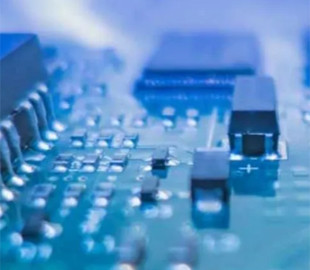
The Cabinet of Ministers approved the Digital Development Strategy until 2030, which provides for the creation of chip production in Ukraine. According to the Ministry of Digital Transformation, starting production requires $1 billion or more.
The Cabinet of Ministers approved the Digital Development Strategy for Innovation Activities until 2030, which provides for the creation of chip production in Ukraine.
The Ministry of Digital Transformation believes that starting chip production in Ukraine requires $1 billion or more. This is reported by UNN with reference to Cabinet Order No. 1351-r and Forbes.
Details
On December 31, the Cabinet of Ministers approved the Strategy for Digital Development of Innovative Activities of Ukraine for the period up to 2030, as well as the plan of measures to implement the strategy in 2025-2027. In particular, one of the directions of the strategy is the creation of chip production. As indicated in the strategy, semiconductor technologies are developing very quickly, and today they have become the basis for many modern innovations, such as artificial intelligence, high-power computers (data centers), mobile phones and gadgets, the Internet of Things, etc.
The European Union has adopted an act that provides for the investment of 43 billion euros in the production of microchips in Europe, and the ambitious goal of the EU is to “embrace a share of 20% of the volume of the global semiconductor market by 2030”, which “creates great prospects for development of industry in Ukraine and integration of Ukrainian manufacturers into supply chains”.
Despite the presence of a large number of specialists involved in working in global companies, developing software and designing microcircuits, there is no specialized manufacturing enterprise. The semiconductor industry in Ukraine is currently virtually non-existent. In the past, research and production enterprises in Ukraine developed up to 40 percent of microelectronics in the USSR until the early 1990s. After the collapse of the Soviet system, Ukraine lost its market position, many specialists emigrated or retrained in other areas
– the strategy states.
It is indicated that the main obstacles to the development of the semiconductor technology industry are the insufficient level of scientific research and development, the outflow of specialists, insufficient infrastructure for the development of high technologies, the obsolescence of the element base, the presence of high competition in the world market and the complexity of integration into global supply chains, and the insufficient volume of the domestic market.
Ukraine's advantage for entering the specified sector is human capital and experience in the development of microelectronics. Despite the significant loss of scientific and production potential, the history of the industry, the presence of a scientific and educational base, and the preservation of the specialty “Microelectronics” (now “Micro- and Nanosystems Engineering”) indicate the presence of a foundation for the revival of the semiconductor technology industry
– the strategy states.
The document indicates that the achievements of this direction of the strategy are:
- submission of a draft law on the development of the semiconductor technology industry, which will create a favorable environment for development and investment in the microelectronics sector, in particular by creating incentives for research and development;
- creation of an innovation cluster that will unite research institutes, higher education institutions, startups and private companies in the semiconductor sector;
- ensuring synergy with other innovation clusters, integration of Ukrainian microelectronics into the development of other innovation clusters, in particular defense technologies;
- concluding memoranda with the EU and enterprises in the microelectronics market on joint projects, investment programs and involvement in the implementation of the plan provided for by the European Chip Act;
- promoting investment in the creation of production capacities in the microelectronics sector.
The operational plan for the strategy indicates that by the 3rd quarter of 2025 it is planned to conclude memoranda with the EU and enterprises in the microelectronics market on joint projects, investment programs and involvement in the implementation of the plan provided for by the European Act on Chips, which “will allow establishing new partnerships, creating opportunities for Ukrainian manufacturers and integrated into pan-European efforts to increase semiconductor production”.
As Forbes writes, the biggest players on the market are in chip manufacturing – Taiwan's TSMC and South Korea's Samsung. To reduce dependence, China, the USA and Europe spare no money to support their own companies.
Oleksandr Grudanov, a member of the working group at the Ministry of Digital Affairs, told the publication that the Ministry of Digital Affairs wants to launch the production of chips with a size of 180, 130 and 110 nanometers. These are not the most advanced developments (American Intel and TSMC are working on 1.8 nm and 4 nm technologies, respectively).
It is quite possible to cover the needs of the defense, agricultural and automotive sectors with such chips. The authors of the document consider the American company Silvaco Group as a partner for developing software for chips. Who will produce them and how? There are two options.
The Ministry of Digital Affairs may involve a licensor company that will be responsible for controlling the construction of the plant, configuring the equipment and launching the pilot line. In such a scenario, the state can own a controlling stake in the factory, ensuring priority for its own needs of the military-industrial complex and advanced research projects. This stage also envisages training Ukrainian specialists abroad.
It may last six months or a year, Ukraine will pay the partner a license fee and receive technical support from him
– Grudanov reported.
He noted that Ukraine will be able to make its own addition to the existing technology and produce more specialized chips, for example, more resistant to electronic warfare or those that function better in space. Another option for developing chips in Ukraine is to attract a partner through a state tender. Grudanov noted that the reference figure during the construction of a factory under the licensing model – up to $1 billion.
We calculated several options, but we all agreed on this amount
– added Grudanov.
Technology licensing in this case is paid separately.
If a strategic partner is invited, he determines the estimate. However, until Ukraine adopts an analogue of the European law on chips, Chips Act UA, and there are no agreed subsidies and benefits for partners, it is unknown which of the two options will be a priority, says Grudanov.
To sign an agreement with potential partners, stabilization of hostilities and security guarantees from partners are important. From the moment the agreement with the partner is signed, the construction and preparation for operation of the factory will take two years. By the end of the third year – full production capacity
– the publication adds.

